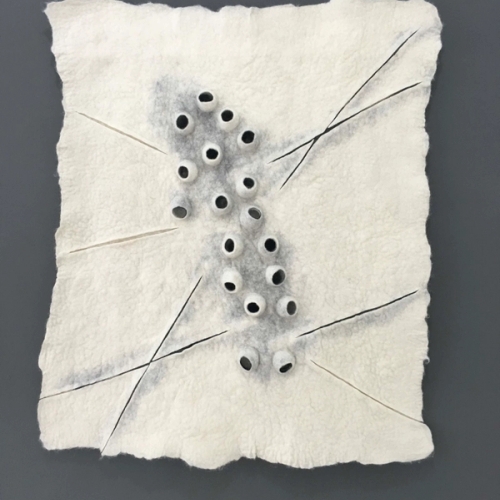

Samira Jamouchi
Tekstil
E-post
samijamo@puttifactory.com
Telefon
–
Nettside
–
Sted
Ås
Working as both visual artist and educator, a liminal space where interaction and co-creation are recurring themes, Samira Jamouchi work operates on diverse arena and with a diverse public. Her research comprises both arts-based research and artistic pedagogical research. She uses performative approaches to materials to explore with others what can emerge in a collective working process. Her artistic work has been exhibited in galleries and museums in different European countries, and in Canada, Morocco and Vietnam. Her scholarly work and scientific papers are published in international scientific journals.
2019
Meeting through iterative gestures of felting. Other contexts, other encounters
Awareness of mat(t)er(r)ialities / matter - realities materialitiesDialoguing between bodies and matterBodies as matter Bodies in (e)motionsMotion as awarenessRealities and credibilityEvocative expres…

2015
Performative encounters with wool fibres
I suggest that the reader read out loudly the next paragraph to ‘taste’ the words in your mouth, listen to them with your ears, as you see them with your eyes.Wool felting is an extra-ordinary source …